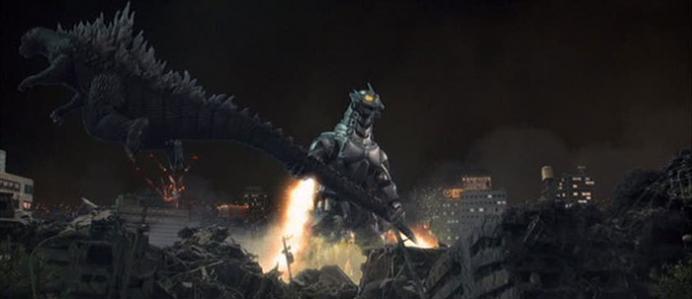Reviews
Godzilla x Mechagodzilla / Gojira tai Mekagojira
Masaaki Tezuka
Japan, 2002
Credits
Review by Adam Balz
Posted on 26 February 2013
Source Crackle.com streaming video
Categories The Compleat Godzilla
One aspect of the Godzilla franchise that receives very little critical attention is the role of female characters. For the most part, this oversight is understandable; after all, the entire point of these films is to showcase monsters fighting one another in grand battles, with humans used only to break up the action sequences and serve as vehicles for expositional subplots. Because of this, groups integral to the storyline - usually scientists or military personnel - usually contained a woman or two, though by and large the entire group was pretty inconsequential, so no one’s role rose above anyone else’s.
This began to change as the franchise entered the 1990s and the characters became younger and more diverse, though often still rooted in either the science community or the military. The most obvious example of this is Godzilla Against Mechagodzilla, in which the filmmakers make female characters integral to the plot—moreso than they’d ever been. And considering how strangely modern the film is at times - the special effects are halfway decent, the sets are intricately designed, the plot actually seems rooted in clear political and scientific ideas - it feels now like this would have been a promising step. Unfortunately, this attempt at redefining the franchise frequently missteps into either ridiculous pandering or maudlin drama.
Opening with an attack on Japan by Godzilla, we are immediately introduced to Akane Yoshiro, a young soldier charged with killing the monster who has terrorized her country for decades. However, her attempts fail - a heavy storm dulls the effects of a new weapon, and other soldiers cause an accident along the highway that costs them their lives - and she is scapegoated for not only Godzilla’s successful escape but the soldiers’ deaths. At the same time, a middle-aged scientist, one of the country’s best, is recruited by the new prime minister to extract DNA from the skeleton of the original Godzilla and use it to help create a bionic version of the monster. This scientist is followed at all times by his daughter, a cute pigtailed girl named Sara, and the girl’s potted plant—a reminder of her late mother, who we later learn died in childbirth. (The child she was carrying, Sara’s sister, also died.) Unlike the scientists and military men around her, Sara believes that Godzilla, as well as Mechagodzilla, are both tortured souls who should be left alone rather than provoked. As she reminds them, they’re both living creatures.
Akane and Sara are presented as strong, troubled outcasts, and their similarities are enhanced late in the film when Sara seems to communicate with Akane telepathically—an ability put to further use when Akane communicates with Mechagodzilla from inside its body, screaming directions into its radiated shell as it struggles to finish off Godzilla in the final climactic battle. We’re led to believe that Akane is a stand-in for Sara’s mother, especially midway through the film when a montage of Akane working out cuts to a still shot of the plant on a table. This would be a perfectly fine plot device were it not for the fact that, as the film ends, their noble efforts - Akane pilots Mechagodzilla single-handedly and with her mind and voice, driving Godzilla back into the sea - fail. In fact, every attempt at defeating Godzilla portrayed in this film rests on the shoulders of Akane, a character who is demoted to library duty after the original accident, maligned by one of her fellow soldiers (his brother was killed in the accident), and entrusted time and again with operating Mechagodzilla’s weaponry. In the final battle, before Mechagodzilla is disabled, Akane could easily kill him off with an Absolute Zero cannon, which would de-particle the great monster and reduce him to nothing; instead, she extends the battle through missiles - which she already knows are useless - and hand-to-hand combat, all of which levels a good portion of Tokyo for no apparent gain. Even then, the film ends with Godzilla - seemingly unscathed, obviously undefeated - marching off into the sunset, victorious yet again over the smartest minds of Japan.
Besides Akane and Sara, there are two other female characters in the film who deserve mention. The first is Sara’s mother, who is seen only in flashback but is an important part of the story. The other, Machiko Tsuge, is a much more disconcerting part of the film. At the start of the film, she is Japan’s prime minister—the public figure tasked with defeating Godzilla and protecting her citizens. In response, she asks for the creation of a weapon to defeat Godzilla once and for all - the Absolute Zero cannon carried by Mechagodzilla - and even responds diplomatically to questions by the press about the weapon’s eventual use, explaining that she’d contacted the leaders of other nations to reassure them she had no intention of using Mechagodzilla for nefarious purposes. This would be a noble depiction of a female head of state, especially in a country where there has never been one, were it not for the fact that she answers these questions while holding her purse and being jostled disrespectfully by the overwhelmingly male press corp. If this weren’t enough, she is replaced as prime minister almost immediately afterwards by the very same man to whom she made the request for Mechagodzilla, a man who leads the attack and accepts the credit and blame for whatever happens—a humble, clear-eyed, and effective leader. Machiko Tsuge, on the other hand, is never seen again, and one is forced to ask what purpose her character served at all if her only purpose was to request Mechagodzilla—a scene that could easily have been replaced with a shot of her successor doing the exact same thing.
Regardless of the final product and its questionable attitude towards women, there’s no question that Godzilla Against Mechagodzilla is one of the more polished and professional entries in the franchise—a clear departure in style and substance from its predecessors. Still, these changes leave a lot to be desired. After all, making those inconsequential human beings a little more significant means nothing if they’re still stuck in the past.
More The Compleat Godzilla
-
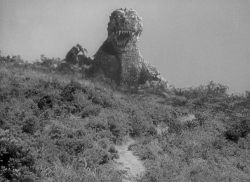
Godzilla
1954 -
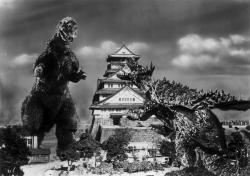
Godzilla Raids Again
1955 -

King Kong vs. Godzilla
1962 -

Mothra vs. Godzilla
1964 -
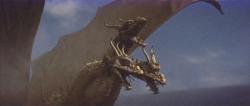
Ghidorah, the Three-Headed Monster
1964 -
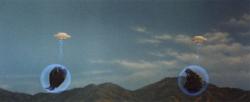
Invasion of Astro-Monster
1965 -

Ebirah, Horror of the Deep
1966 -

Son of Godzilla
1967 -

Destroy All Monsters!
1968 -
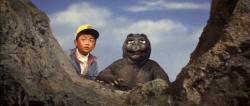
All Monsters Attack
1969 -

Godzilla Vs. Hedorah
1971 -
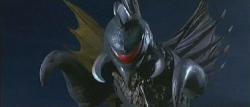
Godzilla vs. Gigan
1972 -
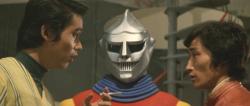
Godzilla vs. Megalon
1973 -
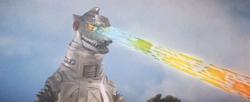
Godzilla vs. Mechagodzilla
1974 -
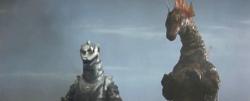
Terror of Mechagodzilla
1975 -
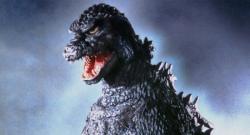
The Return of Godzilla
1984 -

Godzilla vs. Biollante
1989 -
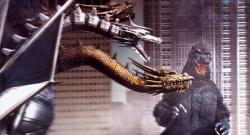
Godzilla vs. King Ghidorah
1991 -
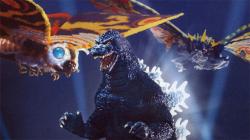
Godzilla vs. Mothra
1992 -
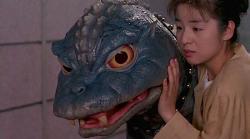
Godzilla vs. Mechagodzilla
1993 -
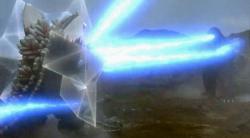
Godzilla vs. SpaceGodzilla
1994 -
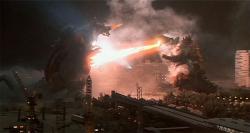
Godzilla vs. Destoroyah
1995 -
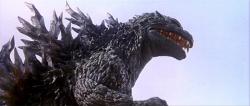
Godzilla 2000
1999 -
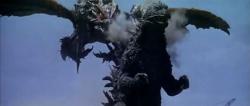
Godzilla vs. Megaguirus
2000 -

Godzilla, Mothra and King Ghidorah: Giant Monsters All-Out Attack
2001 -

Godzilla Against Mechagodzilla
2002 -
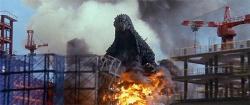
Godzilla: Tokyo S.O.S.
2003 -

Godzilla: Final Wars
2004
We don’t do comments anymore, but you may contact us here or find us on Twitter or Facebook.



